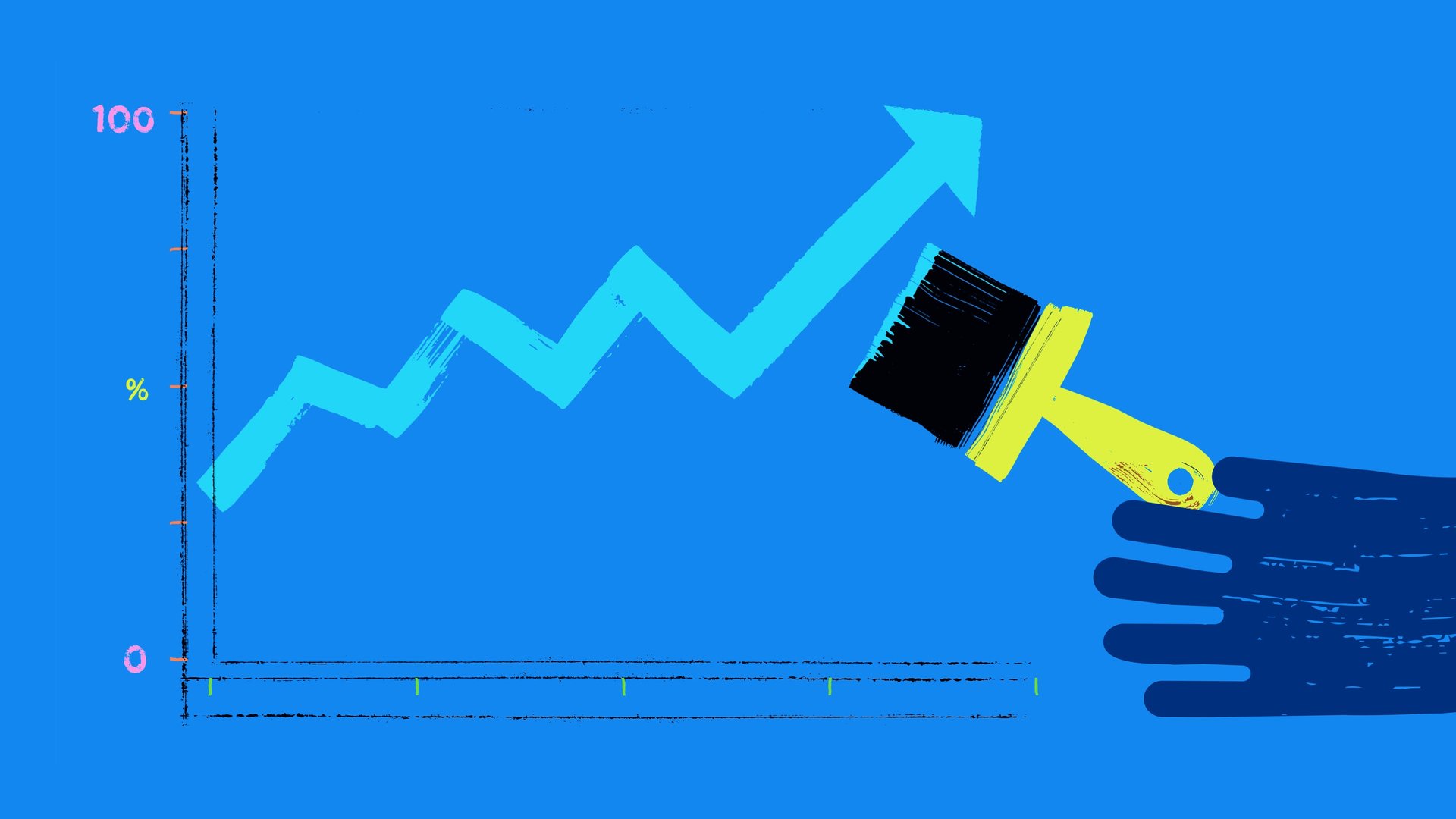A three-step guide for building better data viz
In 2020, humans generated 1.7 megabytes of information per second. That means (on average) every person, every day, generated 2.5 quintillion bytes of data. There are 18 zeros in a quintillion.


In 2020, humans generated 1.7 megabytes of information per second. That means (on average) every person, every day, generated 2.5 quintillion bytes of data. There are 18 zeros in a quintillion.
With each new byte of intel, there’s opportunity to improve. Of course, constant optimization is not a given. Companies don’t always know what to do with what they have. And to understand something, you first need to see it.
What was once a nice to have, data visualizations are a critical tool for spotting and unlocking potential. This is particularly true for sustainability initiatives as data has the unmatched power to identify smarter ways to use current resources. So why aren’t organizations better at it?
Admitting it is the first step. So, now that you’re here, follow along as we outline three ways to build more effective data viz systems.
Make everyone a data analyst
While one team may have the ultimate responsibility for data analysis, when everybody has access to information, there are more opportunities for innovation.
Create reporting dashboards that are accessible, intuitive, and customizable. This lets employees access intel when they need it and helps embed data analysis into every role. What’s more, company-wide trackers dissolve silos that keep what could be critical info locked up inside specific functions or locations. Who knows, a beverage company’s storage plant in Bristol could be the key to solving packing inefficiencies in Stockholm and Shanghai.
If you don’t have the resources to build your own, tools like Tableau and Looker help make sortable reporting systems available for companies of any size.
The more familiar teams are with absorbing and analyzing metrics, the more comfortable they’ll be connecting dots, spotting opportunities, identifying solutions, and translating them in a clear and efficient way for others. (Which is the entire goal of data viz!)
Further Reading
Unlock the hidden factory
Present one thing at a time
Imagine a 15-person video conference call and no one has their mic muted. Clacking keyboards, barking dogs, presenters constantly talking over each other. With all the commotion, both soft and caustic, attendees have little chance of absorbing whatever message they came for.
The same is true with data viz. When you layer too many details into a single chart or stuff an entire whitepaper’s worth of detail into one infographic, your viewer is less likely to remember anything. Instead, think of each piece of data viz as a sentence. It should say one thing, and it should be clear at a glance. For dashboards, this means prioritizing sorting and refining functions to whittle down massive data sets.
With 65% of people being visual learners, packaging data in streamlined and scannable ways leads to more understanding. And more understanding leads to faster decision-making.
Just think how this approach could aid sustainability goals. With everyone from a junior associate to CEO able to access, sort, and understand information, organizations bust open the potential to spot redundancies and do more with what they already have.
Further Reading
What makes a good information graphic
Design with results in mind
For most businesses, data visualizations are the means to the end. And the end is action. While they may be a design exercise, they’re not an art project. So, when creating these visuals, it’s important to center design choices around what will drive results.
Effective data viz entertains the eye, but not at the expense of understanding. When developing data packages and dashboards, build interfaces and designs that encourage engagement and anticipate the inevitable “so what?” by creating a clear, comprehensive picture of the challenge at hand.
Context begets clarity, and clarity drives action. For the food and beverage industry, the need for sustainability has never been greater. The global food supply chain is responsible for 26% of all greenhouse gas emissions. Consumers are clamoring for more sustainable products while shareholders demand stronger returns. Data visualization has the power to embolden smarter, faster decisions that helps the industry carve out sustainability and save costs.
Further Reading
What are data visualization style guidelines?
Data visualization systems present a massive opportunity for companies. They reveal hidden possibilities, promote transparency, and embolden effective decision making at every rung of the org chart.
To read more about how to overhaul your data approach to support sustainability goals, download the Tetra Pak white paper on unlocking ‘the Hidden Factory’.
This article was produced on behalf of Tetra Pak by Quartz Creative and not by the Quartz editorial staff. Sources are provided for informational and reference purposes only. They are not an endorsement of Tetra Pak or Tetra Pak’s products.